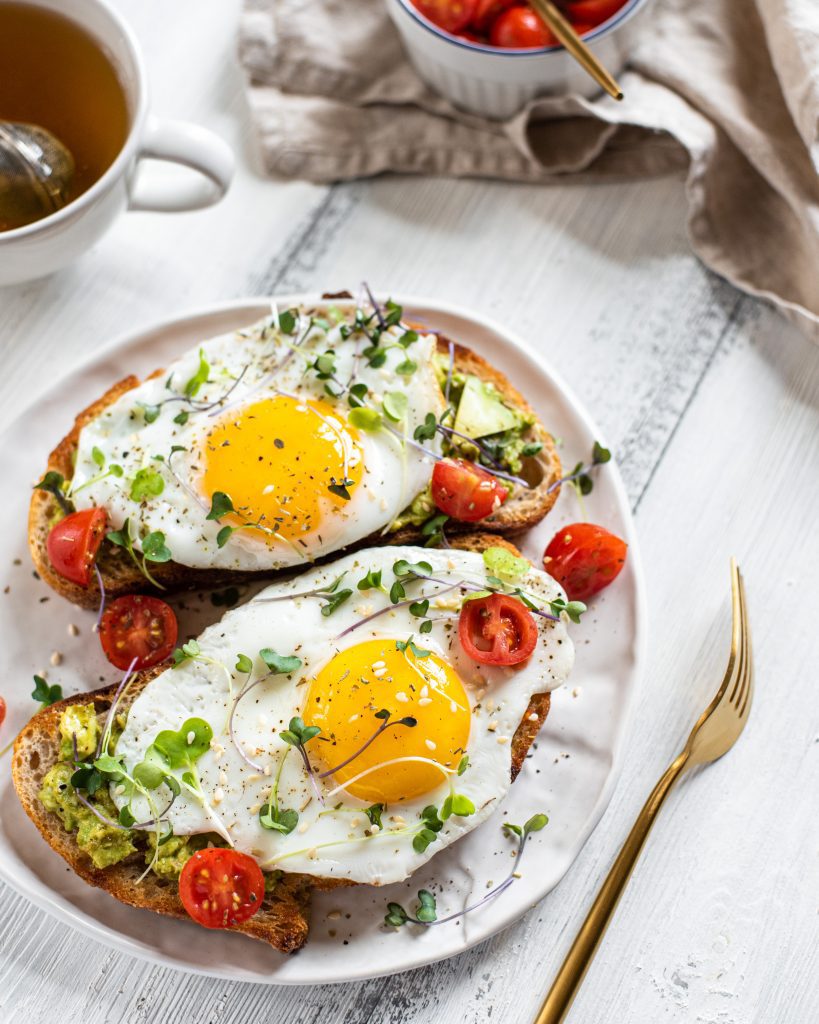
Cholesterol – the good & the bad
High cholesterol is one of the most prevalent risk factors for heart disease and surprisingly 40% of us have cholesterol levels higher than what is recommended. The good news is that, with a healthy diet and regular exercise, you can safely lower your levels and reduce your risk.
So what is cholesterol and why do you need it?
Cholesterol is a waxy, fat-like substance that’s found in all of your cells and is essential for many of your body’s functions, such as making hormones and vitamin D, and producing bile which is essential in helping you break down food and absorb nutrients. The majority of the cholesterol you need is in fact made by your body, with cholesterol from your diet topping it up. Although it is vital for good health, too much can cause problems – it can combine with other substances and form sticky plaques. If these plaques begin circulating and accumulating, it can lead to atherosclerosis, or hardening of the arteries. This will raise your risk for heart disease and stroke, two of the country’s leading causes of death.
How can you test your cholesterol?
A simple blood lipid test through your GP will tell you all you need to know. You’ll be given your total cholesterol, LDL cholesterol, HDL cholesterol and triglycerides. LDL carries the cholesterol through the blood stream and deposits it into the vessel walls, while HDL collects the cholesterol from the blood vessels and moves it to the liver where it is processed for removal out of the body. I like to think that L stands for ‘lousy’ and H for ‘healthy’! Triglycerides are another form of fat in the blood and elevated levels are also associated with increased risk for cardiovascular disease.
The optimal levels in mmol/L are:
| Total Cholesterol | 5 or below |
| HDL Cholesterol | 1 or above |
| LDL Cholesterol | 4 or below |
| Triglycerides (fasting) | 1.7 or below |
If your levels are elevated, another key marker that your GP can request is c-reactive protein or CRP, which is made by the liver and increases when inflammation occurs in the body. Atherosclerosis is an inflammatory process, so high CRP, especially in women, can be an accurate indicator of increased risk for a heart attack.
But what causes high cholesterol?
It is important to consider genetics – make sure you know about your grandparents’ and parents’ health – as well as hormonal imbalances. Even health conditions that seem totally unrelated, like polycystic ovarian syndrome (PCOS) which is caused by excess oestrogen, can impact your cholesterol levels. That is why it is important to check your levels even if you’re young or have a relatively healthy lifestyle.
Other contributing factors are poor diet and insufficient exercise.
How can diet help?
Your diet can have a dramatic effect on your cholesterol levels, and it’s not just about cutting down dietary cholesterol (saturated fats found in animal products, trans fats prevalent in take-away foods, sugar and alcohol). It’s also about adding foods that can actively reduce cholesterol, in particular plant foods rich in fibre. A meta-analysis of nearly 250 studies published in 2019 showed that eating plenty of plant-based fibre cuts the risk of dying from heart disease by up to 30%!
Soluble fibre soaks up water in the digestive tract to form a gel which binds onto the fat and cholesterol from your food and prevents some of it from entering the bloodstream. Furthermore, the bacteria in your gut consume this gel & produce short-chain fatty acids that help lower cholesterol. Fibre also increases the liver’s production of bile acid, thereby removing excess cholesterol from the body.
Yes, it’s now widely acknowledged that fibre is indeed a superfood in helping reduce cholesterol!
How much fibre do you need & where to get it?
It’s advisable to consume around 30g/day but most of us have much less. Remember, if you start increasing your daily fibre, take it slow as too much can cause bloating and discomfort. And it is essential to stay well hydrated when increasing your daily fibre.
Good sources include all plant-based foods, in particular carrots, broccoli, onions, and artichoke, along with bananas, berries, apples, and pears. Also legumes and whole grains, like oats and barley. Chia seeds and ground flaxseeds are a fabulous source providing a whopping 5g/tsp!
At each meal, try to make ½ your plate non-starchy vegetables, a ¼ protein and a ¼ high-fibre, slow-burning starch. Cooking vegetables won’t reduce the fibre content and can make them easier to digest. I always recommend these simple swaps – smoothies for juices, quinoa for white rice, whole-wheat pasta for white pasta, sweet potatoes for white potatoes, chia seeds or flaxseeds for granola, and hummus for creamy dips.
